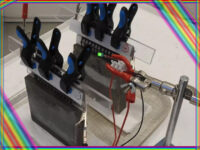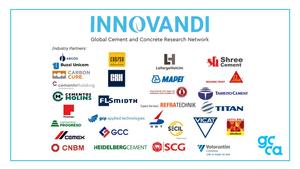According to Wikipedia, the definition of startup is:
“A startup or start-up is a company or project initiated by an entrepreneur to seek, effectively develop, and validate a scalable business model. While entrepreneurship refers to all new businesses, including self-employment and businesses that never intend to become registered, startups refer to the new businesses that intend to grow large beyond the solo founder.Startups face high uncertaintyand have high rates of failure, but a minority of them do go on to be successful and influential. Some startups become unicorns, i.e. privately held startup companies valued at over US$1 billion.“
Advantages of Startups
1. Agility
2. Efficiency (Lean and Mean)
3. Team Culture
4. Personalization
5. Versatility
6. Flexibility
7. Fun
Disadvantages of Startups
1. Risk
2. Compensation
3. Market Access
4. Team Composition
5. Resources
6. Processes
7. Stress
An Opportunity For the Cement Industry: Startups
The cement industry is an almost 200-hundred-year-old industry and has spread rapidly all over the world from the second half of the 20th century. For the society which approaches a population of 8 billion, 4 billion tons of cement are produced annually. As it is foreseen that the need of society will increase in the coming years, the need for the cement sector will also increase.
Issues that the cement industry is responsible for, other than production, are combating climate change, efficient use of resources, energy efficiency, digital transformation, supply of innovative and environmentally friendly products. This list can be enltarged.
Startups can play a vital role by supporting the cement and concrete industry in receiving successful outputs. Hence, the big players in the industry engage in various collaborations with them. Probably this trend will continue to grow in next years. The reasons behind this relation can be listed as below:
- The cement industry has many problems concerning different disciplines. This is a good opportunity for startups.
- The cement companies can be as strong as a rock but also as heavy as a a rock. On the other hand, startups are fast and flexible.
- The leading companies such as HeidelbergCement, LafargeHolcim and Cemex can find and hire talents easily, but other companies may have some difficulties in this regard. Hence, doing business with startups can be a win-win.
- Due to the organic organisation, startups can solve the problems easily and fastly.
- Digitalization level of the cement and concrete industry is still low.
Some Featured Startups Working on Cement and Concrete
1. Sensohive
Concrete sensors are one of the newest and one of the fastest-growing IoT solutions in one of the least digitised industries – the construction sector.
Odense, Denmark-based Sensohive Technologies has developed real-time solution for the remote monitoring of concrete temperature, maturity and strength, Maturix. The data is transmitted from the sensor directly to the cloud, without the need for an intermediary such as a smartphone.
Since the Maturix solution was launched three years ago, it has been adopted by construction companies and precast producers throughout Europe including PASCHAL GmbH, VolkerWessels, Heidelberg Cement, NCC, Skanska and Kruse Smith. Using the sensors, these companies are able to reduce waste, reduce energy consumption (less heating during curing) and more.
Maturix runs on the Sigfox 0G network, the world’s largest IoT network, which covers one billion people in 65 countries. Sigfox’s long-range and low-power demand network allows Sensohive’s sensor batteries to last for up to 10 years. No other concrete sensor can claim such a long life, reliability, reusability and be completely wireless. The data can then be accessed online and documentation ready as you built.
Sensohive has just received a significant investment from Vancouver-based construction company Kryton International in exchange for 30% ownership in the company.
Sensohive was founded in 2014, with the aim to make it easy to collect, analyse and understand value data for your business through wireless sensor solution. In 2016 it launched its first series of sensors, which is now widely used within both the agricultural and the food industry. And in 2017, it launched its concrete monitoring solution.
2. bioMASON
bioMASON was built on a single belief that there is a better way- a new way with cues from natural marine cement formation. Instead of burning calcium carbonate to form cement, they are growing calcium carbonate cement biologically- precise, strong, durable, and real world tested- all formed in ambient conditions.
bioMASON offers ground-breaking technology and a product line unlike any other available to the building and construction industry today. They also serve a number of other industries, including the government and the public works sector, where our technologies are used for novel solutions. This is all possible with the power of biology.
3. CarbonCure
CarbonCure manufactures a technology that introduces recycled CO2 into fresh concrete to reduce its carbon footprint without compromising performance.
Once injected, the CO2 undergoes a mineralization process and becomes permanently embedded, while increasing the concrete’s compressive strength. This results in economic and climate benefits for concrete producers—truly a win-win.
4. Hoffmann Green Cement Technologies
Hoffmann Green has initiated a technological breakthrough based on changing the composition of cement so that it does not contain clinker, the main source of CO2 emissions in traditional cement production, as well as creating a cold and clean cement manufacturing process (no firing of raw materials).
The manufacturing process for Hoffmann Green cements is based on the systematic use of abundant co-products as a substitute for natural resources. This innovation makes it possible to produce a carbon-free cement while preserving natural resources, particularly without the use of quarries. Also, with the absence of a firing process, the carbon impact of Hoffmann cements is significantly reduced compared to the traditional cement manufacturing process.
5. Celitement
Celitement GmbH&Co.KG was founded in 2009 as part of a collaboration between research (KIT) and industry (SCHWENK Zement KG).
A laboratory and administrative building was constructed in 2011 together with a pilot plant. Test material for practical application tests with the new binding agent are produced in this facility. Product features and recipes can be tested together with selected innovators to develop Celitements up to market readiness.
In early 2020, Celitement GmbH&Co.KG was fully taken over by its shareholder, SCHWENK Zement KG. From having been a SCHWENK affiliated company it became a full subsidiary of the well-established building materials group from Ulm. With the full takeover of Celitement GmbH&Co.KG by SCHWENK Zement KG, the financial resources for further expansion of the pilot plant were provided.
Celitements are high quality hydraulic binding agents which are manufactured using a patented, energy-efficient process. Compared to Portland cement clinkers, they are characterised by a specifically lower use of limestone as main raw material and lower process temperatures in the manufacturing. We develop and optimise these innovative hydraulic binding agents with the aim of creating marketable products, thereby contributing to decreasing the CO2 intensity of cement manufacture. In order to do this, we use the latest analytical equipment and have many years of experience in the field of cementitious material development to fall back on.
6. Blue Planet
Blue Planet’s technology uses CO2 as a raw material for making carbonate rocks. The carbonate rocks produced are used in place of natural limestone rock mined from quarries, which is the principal component of concrete. CO2 from flue gas is converted to carbonate (CO3) by contacting CO2 containing gas with a water-based capture solutions. This differentiates Blue Planet from most CO2 capture methods because the captured CO2 does not require a purification step, which is an energy and capital intensive process. As a result Blue Planet’s capture method is extremely efficient, and results in a lower cost than traditional methods of CO2 capture.
All the information about the startups were taken from their official websites.
It will be very beneficial for the industry to make contacts with startups by explaining them the problems and needs of the industry and support them in finding solutions together.














